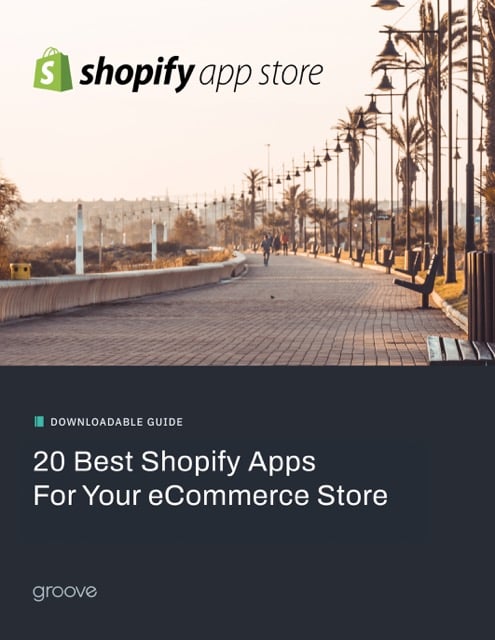What Is Webpage Speed?
Webpage speed, or page load speed, is a term that refers to how quickly or how slowly an entire website or a specific webpage takes to load in its entirety. This takes into account every single piece of content on a page, like images, graphics, videos, text, CTA buttons, the navigation menu and the footer. Page load times vary depending on numerous aspects of a site, such as the size of files, the platform a website is hosted on, how a webpage is coded, the number of widgets used and many other factors.
Webpage load time significantly impacts the user experience and alters how users interact with a website. For instance, when a page takes too long to load, shoppers tend to exit out because they don’t want to wait. On the flip side, people tend to browse around a site longer when it quickly displays results they’re looking for.
Even search engines like Google take page load time into consideration when showing organic search results. As a whole, webpage load times have a significant influence on a company’s bottom line; whether this is a positive or negative effect is up to the eCommerce merchant. If your site speed needs improvement, it’s time to take matters into your own hands or utilize assistance from an experienced eCommerce development team.
How Page Load Times Impact SEO
I want to quickly touch on the fact that Google uses mobile-first indexing. This means that for the most part Google uses the mobile version of a webpage’s content (as opposed to the desktop version) when analyzing a page’s relevance to a search term. So, what does this mean for eCommerce merchants that want to improve their organic search rankings?
In short, merchants looking to rank on the first page of Google should optimize for mobile devices in addition to desktop. Although Google does not require merchants to have a mobile version of each page, it’s highly recommended if your goal is to improve organic visibility.
Now you're probably wondering how webpage speed plays into this. A while back, Google used it as a ranking factor only for desktop searches. In July 2018, the search engine rolled out an update that included page load speed as a ranking factor for mobile searches, too. Though this has been rolled out for over 3 years now, it’s an important call out for eCommerce merchants that don’t have an active focus on improving the mobile experience. Google has even said themselves that as page load time increases from 1 second to 10 seconds, the probability of a mobile site visitor bouncing increases by 123%.
Because Google uses mobile site speed as a ranking factor, websites with faster page loading times will almost always come out on top compared to websites with slower page loading times. Of course, there are other dependencies based on the eCommerce SEO strategies of competitors, but site speed is still an important component.
Optimizing an eCommerce website for SEO is critical to a company and its bottom line because high search rankings increase reach, visibility and traffic. On the first page alone, the first 5 organic results account for over 67% of all the clicks, and the results in spots 6 through 10 only account for less than 4% of clicks, according to Zero Limit Web. Visibility impacts how many people see a page, click on it, shop around and actually make a purchase - which ultimately influences the bottom line.
How To Measure Webpage Speed
Google’s PageSpeed Insights is a valuable tool for measuring and reporting a page’s performance on both desktop and mobile. It provides suggestions on how each page can be improved and uses a score that summarizes each page’s simulated performance.
PageSpeed Insights also assesses Core Web Vitals and classifies each as Good, Needs Improvement or Poor. Here’s how the scoring works:
- A score of 90 and above is classified as Good
- A score of 50 to 90 is classified as Needs Improvement
- A score below 50 is classified as Poor
There are various site speed reports that perform different functions. Use the Page Timings report to see a detailed analysis of each page’s performance; the Speed Suggestions report for customized tips on how to optimize each page; and the User Timings report for an in-depth analysis of individual resource performance, such as each image or button that’s on the page. It's important to measure your webpage speed before, during and after launch to create the best experience for those that land on your site.
How Page Loads Speeds Affect UX
Nearly 70% of consumers admit that page speed alters their willingness to buy from an online retailer. I mean, does this surprise you?
Put yourself in the consumer’s shoes for a moment. You’re shopping online for that must-have item and comparing various brands and products. Which brand has the best option? How are they the same? Different? You’re browsing around on multiple websites and have come across a site that looks intriguing - like it may have what you’re looking for (thanks to your optimized SEO strategy!)
You’re excited to click on it and read all about it, but the site doesn’t load. Or it takes too long to load for your liking, so you exit out and find a similar product from another website. As a consumer, it’s no big deal if you found the product you’re looking for somewhere else. As a merchant, it hurts big time if you’re losing out on potential customers and potential lost revenue based on something as simple as webpage speed. You have already successfully reached the customer, and now that they’ve landed on your page, they decide to leave because it doesn’t stack up against the competition. That leaves a weighty impact on revenue.
Even if a potential customer finds a similar product elsewhere, the experience they had with your site could be tarnished, regardless of if they’re a new or loyal customer. Loyal customers who buy consistently will become frustrated with slow page load times, too, resulting in their shopping elsewhere.
Lastly, this also affects the algorithm that social media platforms use to put content in front of its users. Facebook, for example, made an update in 2017 that showed people more stories that loaded quickly on mobile and showed less stories that took longer to load. Fast forward to 2021, and the platform is still putting the effort to let its users know when a link may load slower than they’d like based on their connection and region. Talk about improving the user experience, Facebook!
Conclusion
I hope this blog has helped you better understand how webpage speed impacts a company and its bottom line. It affects companies both positively and negatively; however, it’s up to the merchant to invest in custom website development to better enhance the user experience and drive revenue.
If you want to learn more about how Groove Commerce can help your company increase its page loading times, reach out to us through the form below with questions or concerns. We’ll be happy to learn more about your eCommerce needs!

E-BOOK
20 Best Shopify Apps For Your eCommerce Store
Explore tags:
About the author
Subscribe to the Groove Newsletter
Get the latest updates and insights straight to your inbox



